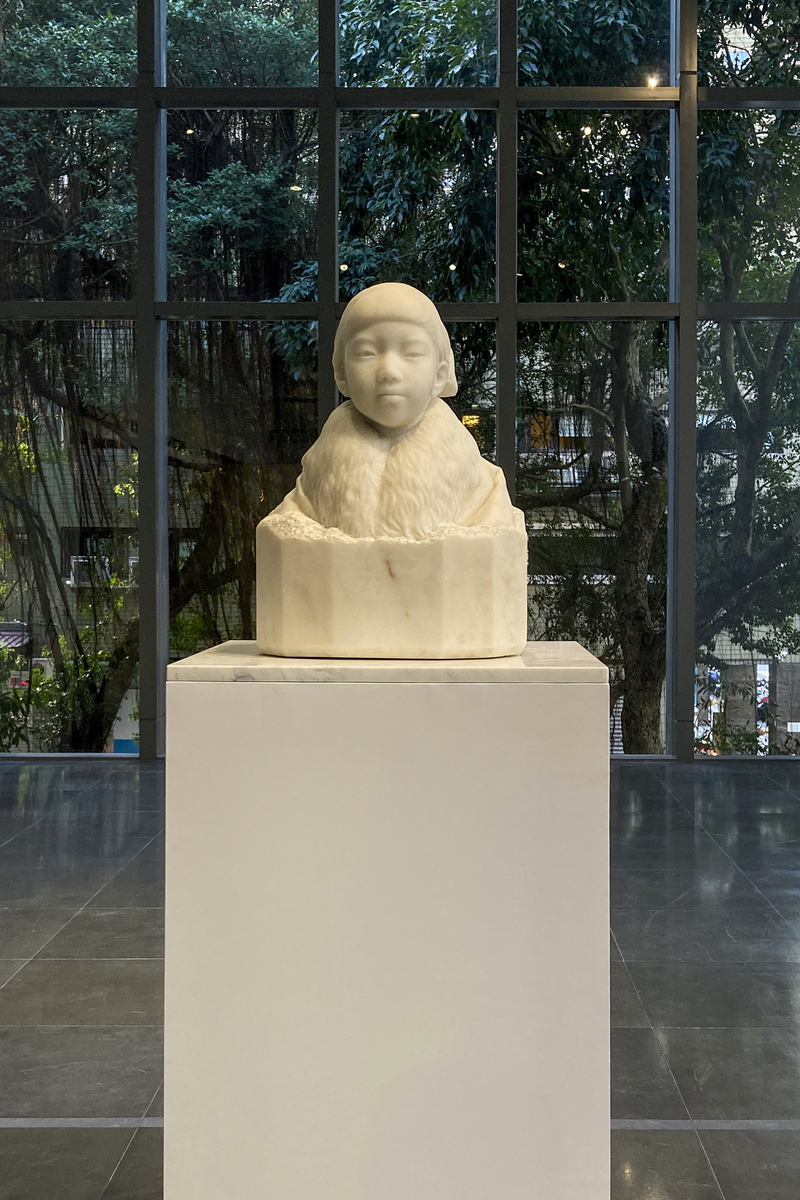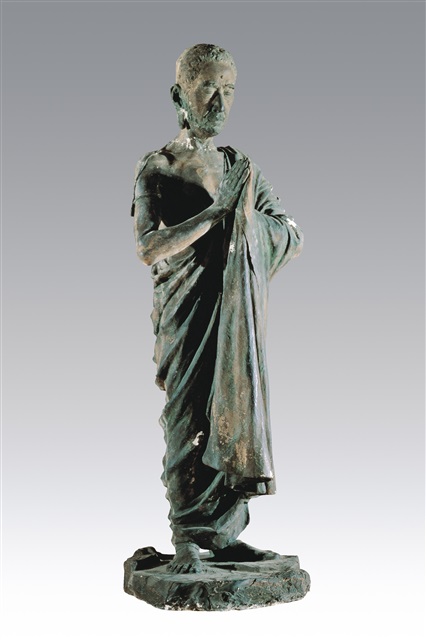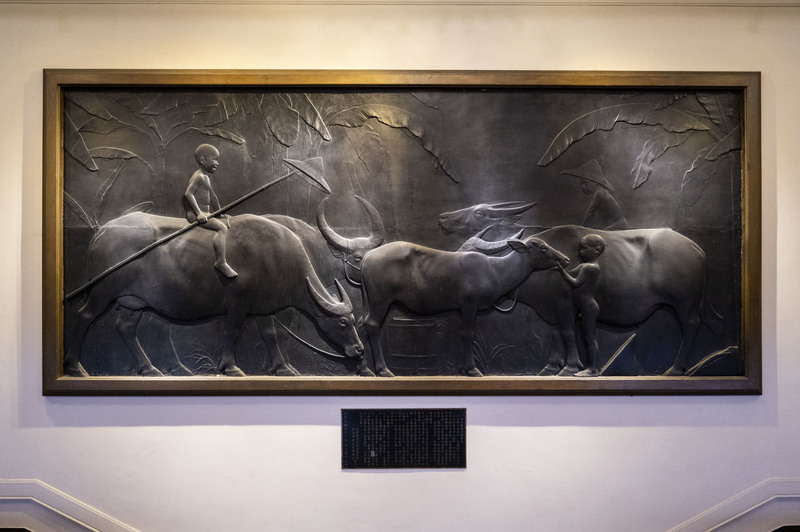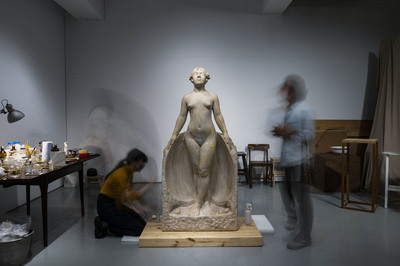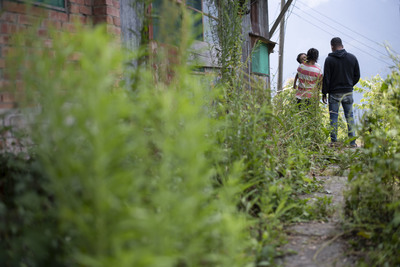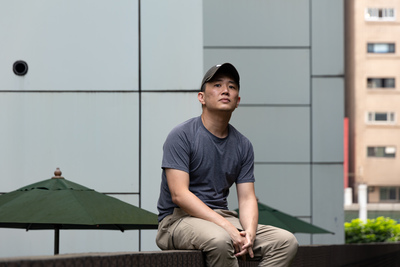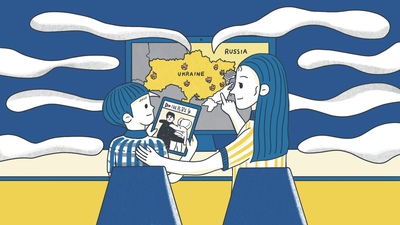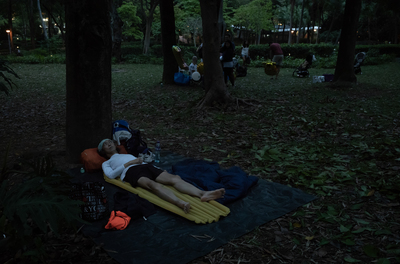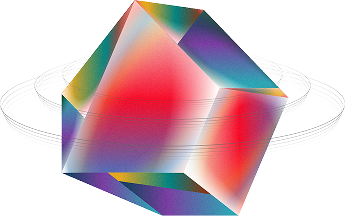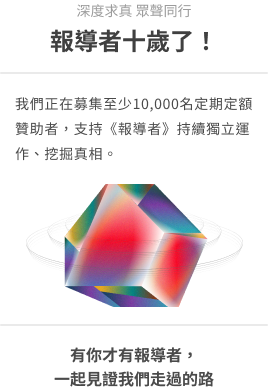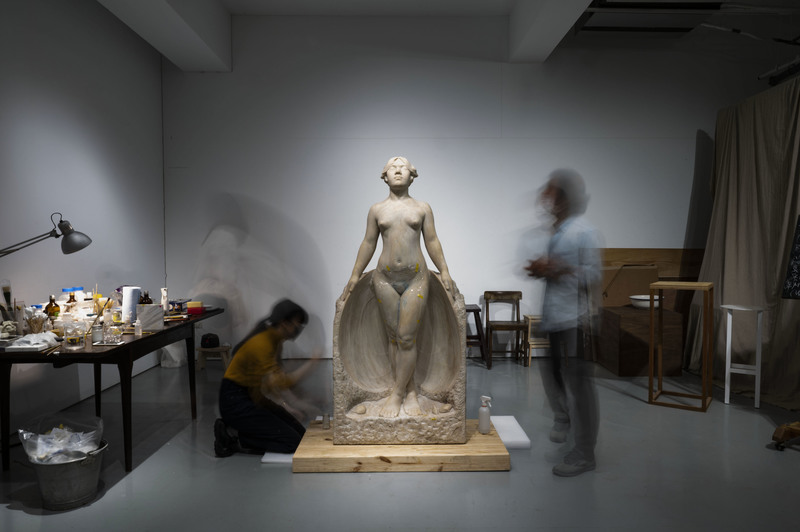
In October 1921, two events rocked the Taiwanese arts and cultural space; the founding of the Taiwan Cultural Association, and Huang Tu-shui’s (黃土水) sculpture, ‘Water of Immortality’ (甘露水), was selected for the Japan Fine Art Exhibition. One hundred years after its birth, the long-since locked away ‘Waters of Immortality’ has been fully restored, and on December 18th 2021, MoNTUE once again unveiled her to the world.
Thinking that men did not live past the age of 50, the then 27-year-old Huang Tu-shui, believed his life was half over, and that he ought to devote himself more to his craft. He wrote: “What kind of art will be born from my remaining existence? It is the sculptor’s mission to create fine works of art, so as to inject beauty into the lives of those around them.” Though Huang Tu-shui, having dedicated his life to art, passed away at only 35, his works transcended both time and physical form, becoming a key milestone in Taiwanese art history.
Tucked in the corner of a factory in Wufeng, Taichung, a forgotten memory once again emerges in the light of day.
Rusted nails wrenched free with a shovel, Japanese restorer Junichi Mori pried away piece after piece of rotten wood, before carefully peeled away layer after layer of linen and plastic. Lin Manli (林曼麗), chairman of the Taiwan National Culture and Arts Foundation, went to receive this national treasure in-person. Looking back on that day, she said:, “I will never forget the moment the crate was opened, and I first laid eyes on ‘Water of Immortality’. After remaining sealed for 50 years, it wasn’t just me - everyone was so nervous because none of us knew what state she’d be in.”
On the 6th of May 2021, ‘Water of Immortality’ was reborn, after 50 long years.
In 1921, ‘Water of Immortality’ was selected for the third Japan Fine Art Exhibition (or Teiten for short) - Japan’s most important official exhibition and the holiest temple of art, judged by respected local scholars, critics and artists. However, this Japanese stage was one immigrant Taiwanese artists could seldom walk upon. With entry being so difficult, those successfully selected were subject to wide acclaim, elevated to stardom in the art world. Debuting a century ago, ‘Water of Immortality’ was Taiwan’s first sculpture of the female form, and Huang Tu-shui’s second selection for the Teiten, following the exhibition of ‘The Barbarian Boy.’
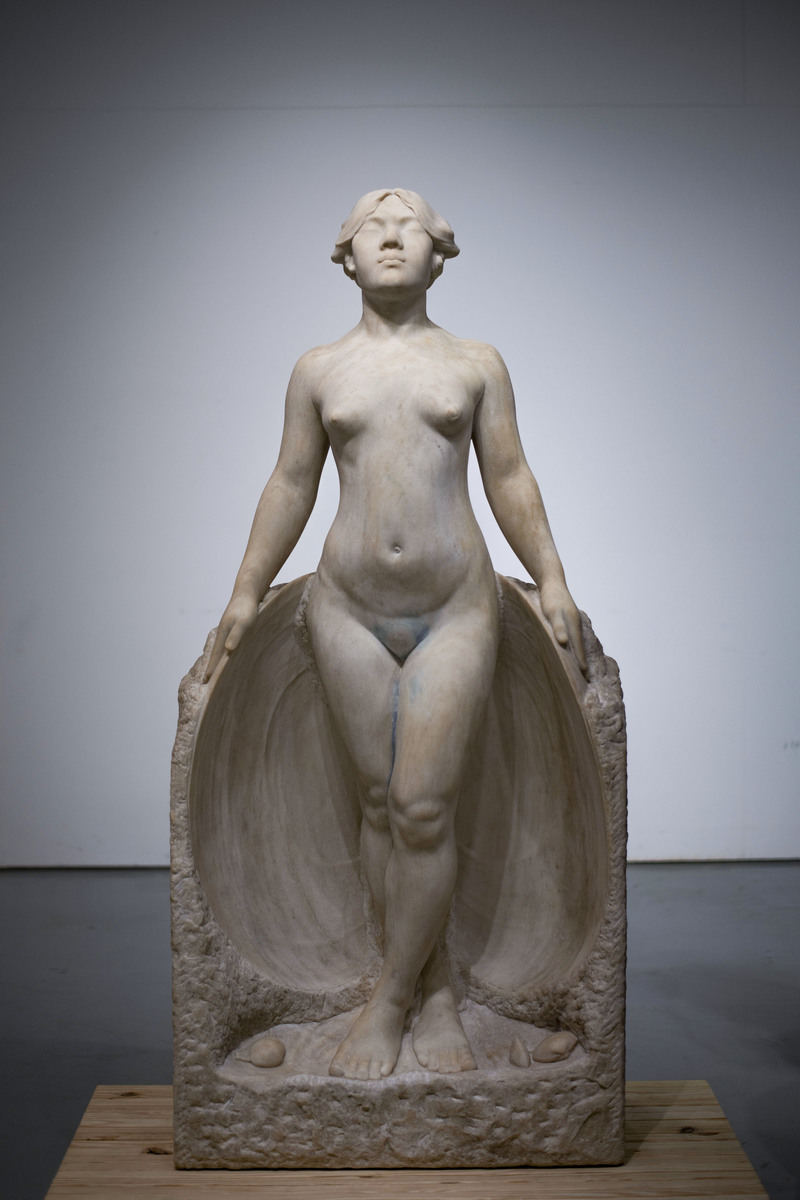
Made to be life-sized, the figure of a young woman proudly emerges from a clam shell, facing forward, her face cast ever so slightly upwards. With her eyes half-opened, it’s as though she sees nothing and everything all at once. Taiwanese fine art historian, Hsiao Chong-ray (蕭瓊瑞), believes an easy comparison can be made between ‘Water of Immortality’ and the classic work of Renaissance artist Sandro Botticelli, ‘The Birth of Venus’. However, the figure Huang dedicated two years to carving bears an Asian form and appearance. She carries the spirit of the East.
Originating from a passionate calling that has never been extinguished, the very essence of the hometown is captured within the work. In 1922, Huang Tu-shui had his essay ‘Born in Taiwan’ published in East Magazine (東洋), detailing his artistic journey.
“I was born in this nation, so I love this nation. I was born on this land, so I love this land. That is just human nature. Although art can be created anywhere, as it is unbound by national borders, I still yearn for the land in which I was born. Our beautiful island of Taiwan still calls to me.”
At the time, Huang was studying at the Tokyo Fine Arts School, living in the Takasago dormitories, provided by the Governor-General of Taiwan, to save on expenses. When a winter chill swept Japan, Huang yearned for the eternal summer of his southern island home, detailing various images of Taiwanese scenery in his writings.
These people and images have become core themes of Huang's works. Though his works all mirror reality, these aspects remain superficial. Lin Manli, exhibition coordinator for ‘The Enlightenment and Self-Awakening of Taiwanese Culture’ exhibit housing ‘Water of Immortality’, stated that, “A true masterpiece defies its physical form, capable of conveying the true intentions of the artist. The artistry, or spirituality, Huang created bestowed this piece with a unique vitality.”
In similar fashion, when unveiled at the 1922 Tokyo Peace Exposition, Wu Sanlian (吳三連), who was then studying in Japan, was so deeply moved by ‘Water of Immortality', that he expressed his feelings in writing. For those coming from colonised nations, respect and reverence is something earned through hard work. Named after Guanyin, the young woman in ‘Water of Immortality’ appears both mortal and divine. In fact, Huang’s work inspired Taiwan’s artistic forefathers, whose ranks included Tan Teng-Pho (陳澄波), Li Mei-shu (李梅樹), Tân Si̍t-kî (陳植棋) and Lí Tsio̍h-tsiâu (李石樵). This in turn inspired many young artists of today, marking the dawn of a new era in Taiwanese art.
In 1895, the year Japan seized control of Taiwan, Huang Tu-shui was born behind an ancestral temple in Mengjia (modern-day Wanhua district, Taipei). His father, a carpenter, died young, so his mother took Huang to live with his uncle. Only beginning school at the age of 12, he was transferred from Mengjia Public School to Dadaocheng Public School (modern-day Taiping National Primary School). Since he often spent his days at a Buddhist carving shop, and with his elders all being carpenters, young Huang became interested in the art of carving.
After finishing high school, he was admitted to the Taipei University of Education. It was in his drawing and handicraft courses that Huang’s creative talents began to shine. As explained by Tsai Chia-chiu (蔡家丘), an associate professor for the Art History Department at National Taiwan Normal University (NTNU), back then these courses were all about still life and geometry, “They were intended to train cartographers. Tracing history farther back, a modernised nation needed a planning industry with those who could draw, or with the skills to draw up schematics for ship artillery. It was fundamental training, so teaching wasn’t at all artistically inclined.” Unless they were fortunate enough to meet an art teacher like Kinichiro Ishikawa (石川欽一郎), who was willing to take students to sketch, young people in Taiwan who wished to learn professional art post-secondary school could only pursue their studies in Japan.
Supported by recommendations from Uchida Kakichi, the then Chief of Home Affairs for the Governor-General of Taiwan, and Kumamoto Shigekichi, the chancellor for the Taipei University of Education, Huang was awarded a scholarship from the Oriental Society. On the 17th of September 1915, he embarked overseas to study at the Sculpture Department of the Tokyo Fine Arts School (modern-day Tokyo University of the Arts), becoming Taiwan’s first art student to study in Japan. At this time, European sculpture and impressionist works were first appearing in Japan, and Huang was directly inspired by both the carvings of Takamura Kōun (高村光雲), and the Italian stone carving techniques he observed outside schooling.
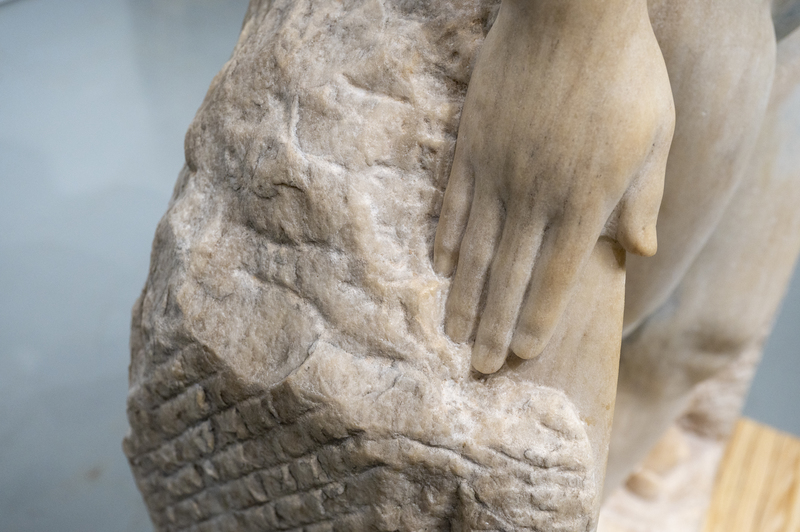
“How does one effectively convey the attitude of a sculpture? How does one successfully chip away at the stone?” Locked up in his room all day long chiselling away, his classmates called him a freak. Huang was more concerned with wasting precious time and materials. “Thinking back, I was always careful, always cautious. I spent every day engrossed in carving, so naturally I was too busy for other people.”
In ‘Born in Taiwan’, Huang’s continuously calls to the youth of his distant homeland:
“For those that do not understand art, do not understand life’s vitality, their future is bleak indeed. Our journey is never-ending, our struggle long and fraught with hardship. But what for? Because our homeland currently lacks the children of art who can work alongside us.”
Why do we long for our brothers to dip their toes into the realm of art? Why do we believe art capable of changing society? Tsai Chia-chiu states that this isn’t a belief unique to Taiwanese artists. At the turn of the 20th century, subjected to Imperialist invasion, both China and Japan sought rapid modernisation. More than industrial development or political revolution, what they needed was an elevation of culture. In the art world, Western associations dictated what was contemporary. Being from a colonised nation, Taiwan’s artistic predecessors were exposed to new ways of thinking, “So in their eyes, art was not simply a recreational creative outlet, or a romantic act. It was a pure form of individual expression, rooted to the core values of Taiwanese nationhood, and to profound understandings of self.”
Tsai Chia-chiu believed the ‘awakening artists so fervently demanded, complemented such movements as the Petition Movement for the Establishment of a Taiwanese Parliament and the Taiwanese Cultural Association. “Artists aren’t all high and mighty, nor do they live detached from reality,” but rather they seek a social revolution spurred on by culture.
Many times Huang Tu-shui would criticise Taiwanese aesthetics as being held hostage by ‘tradition’, as succumbing to material indulgences. Such traditions were in clear opposition to the China failing to keep pace with Japan. This first generation of artists undoubtedly saw Japan as the pinnacle of artistic modernity. As pointed out by Chou Wan-yao (周婉窈), a scholar who specializes in Taiwanese history, "modernization" and "colonization" are two key words that are paramount in understanding the psychology of Taiwanese people during the Japanese rule. The colonial motherland brought new visions, institutions, and cultural enlightenment, while at the same time defining the level of symbolic value, as well as the learning and evaluation of artistic creation.
After graduating from the Tokyo Fine Arts School, Huang often travelled back and forth between Japan and Taiwan. Having a workspace in both Mengjia, Taiwan and Ikebukuro, Japan, he devoted himself to creating something worthy of the Teiten exhibition. Huang was commissioned by the government, businesses and celebrities alike, even gifting his pieces to the imperial family and governor-general. In his 15-year sculpting career, he produced over 60 pieces, large and small - having dedicated much of his life to creating art.
In 1930, Huang Tu-shui completed his final work, ‘Taiwan Buffalo’’. After continually delaying medical treatment, he succumbed to appendicitis and peritonitis the same year, passing away in Tokyo at only 35.
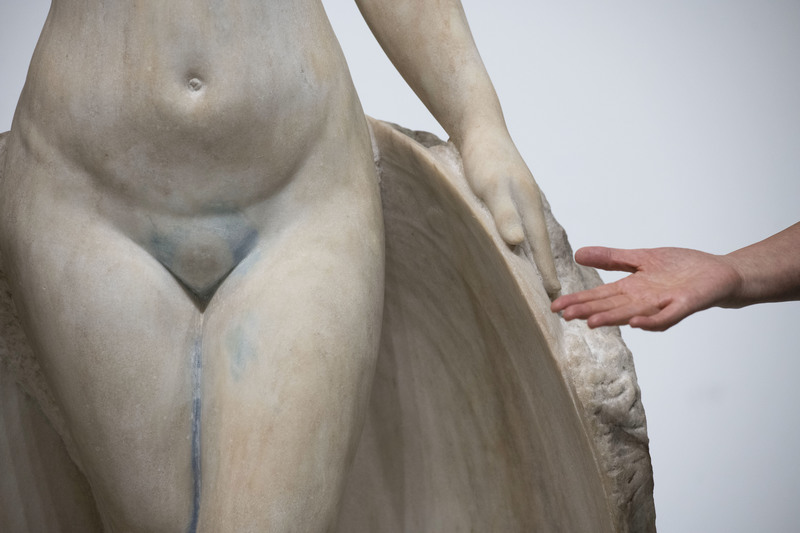
In 1931, ‘Water of Immortality’ was returned to Taiwan by Huang’s widow, Liao Chiu-Kuei (廖秋桂), and donated to the Taiwan Education Association Headquarters (now the National 228 Memorial Museum) as an inauguration gift. There the sculpture stood in the Taiwan Governor-General’s old residence (now the Sun Yat-Sen Hall), as part of the ‘Huang Tu-shui Memorial Exhibit’.
In 1945, World War II ended, and control of Taiwan was ceded to the Government of the Republic of China. The Taiwan Education Association Building would be repurposed for the Taiwan Provincial Consultative Council, and then by the United States Information Agency when the Council moved from Taipei to Taichung, ‘Water of Immortality’ moving along with them. Yet the sculpture ended up abandoned outside an old Taichung train station. Lin Manli states that the Government had a lacking understanding of occupation-era art, and an even more lacking appreciation of artistic preservation, “With many of the general populace lacking artistic knowledge or understanding, many would find a nude sculpture such as her vulgar.” The "Water of Immortality", once selected for the Imperial Exhibition, how had her lower abdomen and thighs cruelly defiled with smatterings of ink, her once spotless skin now marred black and blue.
Unable to bear the thought of the statue sitting outside exposed to the elements, Chang Hongbiao (張鴻標), a surgeon based next to the station, admitted ‘Water of Immortality’ into his clinic ‘for treatment’. But during the White Terror years, possession of Huang’s work posed a significant threat, and his association with Japan, his artistic advocacy and social involvement all added to the uncertainty. In 1974, with Chang Hongbiao’s health declining , Lin Manli guesses that “he didn’t know how long he had left, was no longer able to protect her [‘Water of Immortality’] himself, and had children that were still young. No doubt he was worried, so not knowing what else to do, his only option was to lock her away.” And so ‘Water of Immortality’ was moved from the clinic to a factory in Chang’s hometown of Wufeng, tucked away in a corner, where she would rest for 47 long years.
Despite knowing her still to be in Taiwan, ‘Water of Immortality’ long remained lost to the outside world. Since 2021 marked the centenary for the Taiwanese Cultural Association, Lin Manli had one wish in curating her exhibit. “Both ‘Water of Immortality’ and the Cultural Association were created the same year, even down to the same month. This is greatly symbolic. If ‘Water of Immortality’ could appear in this exhibit, then I would honestly have no regrets.”
Following a trail of contacts, and a tip from the presidential house, Lin Manli was finally able to meet with Chang Hongbiao’s son, Chang Shiwen (張士文). She had prepared countless means of persuasion, but ended up not needing a single one . Chang Shiwen simply said, “Why don’t you move her out? We’ve waited for this day long enough.” In the time the sculpture had stayed with them, the Chang family had faced immense outside pressure, and by returning her to the world, they could finally be left in peace.
“When Dr. Chang originally locked her away, I think he anticipated a bright future ahead. But his own life was already coming to an end, so he simply wished to preserve her as a gift for future generations. There is no way he could have known what exactly would happen, but he certainly believed there would be a day ‘Water of Immortality’ would once again be cherished and revered. That would be the day she would be allowed to return to the world.” Lin Manli believed that day had finally arrived.
Having previously worked with several other of Huang Tu-shui’s works, and being a graduate of Tokyo University of the Arts, Junichi Mori was both sculptor and sculpture restorer. Hidden in the basement of the MoNTUE Gallery, he was hard at work helping his newest patient, Huang Tu-shui’s ‘Water of Immortality’. Before moving to this restoration space, Junichi had witnessed the sorry state she was found in. Lying prone in a wooden crate, the remains of a rats nest nestled under her left side, her skin mottled yellow and stained in several places, she was incomparable with the radiant figure shown in black and white photos.
Junichi explained that Taiwan’s humid climate heightened risks of organic deterioration, and that the stone discoloration is indicative of chemical changes. But the biggest challenge were the ink stains. “These are two completely different types of stains. The natural discoloration is the cumulative product of aging, it would be no different had she been stored indoors for several decades. But the ink stains are a product of human action, ink is completely different from organic matter.” Despite deducing the ink’s chemical makeup, and seeking the help of chemistry professors from National Taiwan University, removing the ink stains proved an impossible feat. “Ink back then may have had acidic properties. After dissolving the stone’s minerals, it could have seeped into the body itself. I didn’t know this at the start, and only realized it once I had begun working on her.”
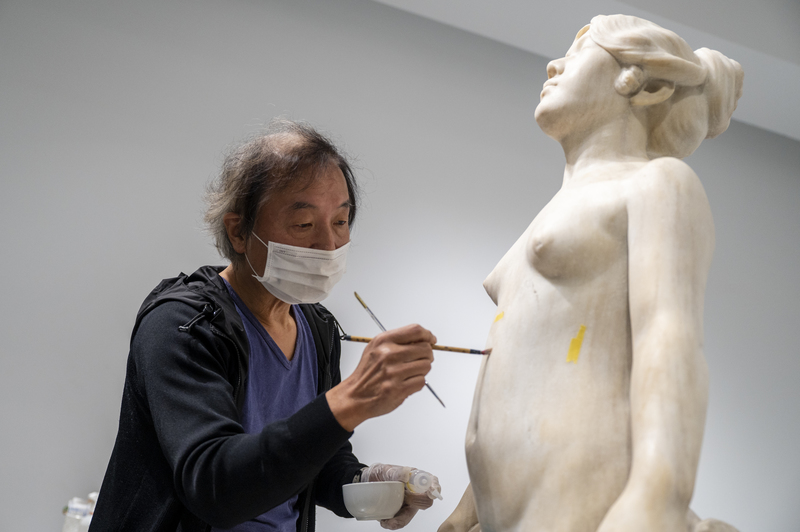
Continuing their research to find a suitable remedy, all that could be done in the meantime was to cover the blemishes with a stone ‘concealer’. “Throughout the restoration process, I can more or less sense what Huang Tu-shui would be thinking. He would want people to gaze upon a piece that represented the beauty of the female form, not be distracted by the ink staining her skin.” In handling the sculpture, Junichi stated he could sense Huang's thoughts and movements as he carved her. The openings left from enlarging the proportions, scrapes left by the whetstone, these are all fingerprints of the artist. Junichi sought not to return the work to the time it was created, but to bring the sculpture into the present moment and to ‘age’ no longer. When working on the sculpture ‘Bust of a Girl’ (‘少女胸像’), in a documentary he similarly stated, “The sculptor is determined to create a moment frozen in time. Such moments shouldn’t be overlooked, for if preserved completely, then the piece achieves the immortality that the artist seeks.” As though speaking with a time traveller himself, the 27-year-old Huang once stated:
“There is only one way to truly live forever. It is a spiritual immortality. To us artists, till the day our work, the pieces we have poured out blood, sweat and tears into, crumble and decay, we will never truly die.”
‘Water of Immortality’ is a cultural treasure, a gift passed from an impassioned young man to his homeland. But more so, it reflects a century-long national metamorphosis. We still have much to learn from the past, both historically and politically. This is why Lin Manli believes the cataloguing of cultural relics and older works of art to be so fundamental. “I often talk about how Taiwan has lost touch with its art history. Mending this rift, restoring these connections, and finding what has been lost, research is essential to making this possible.”
Such work is a race against time, “Regardless of the materials used, all art is made from organic matter, which deteriorates over time. This is an indisputable fact. This is why we restore and preserve, to extend the lifespan of these great works.” However, this is also a race against human mortality. Most works will be in the possession of the artist’s descendants, “Most direct relatives will be around 80, 90 years of age, they’d be worried what would become of these works when they’re gone.”
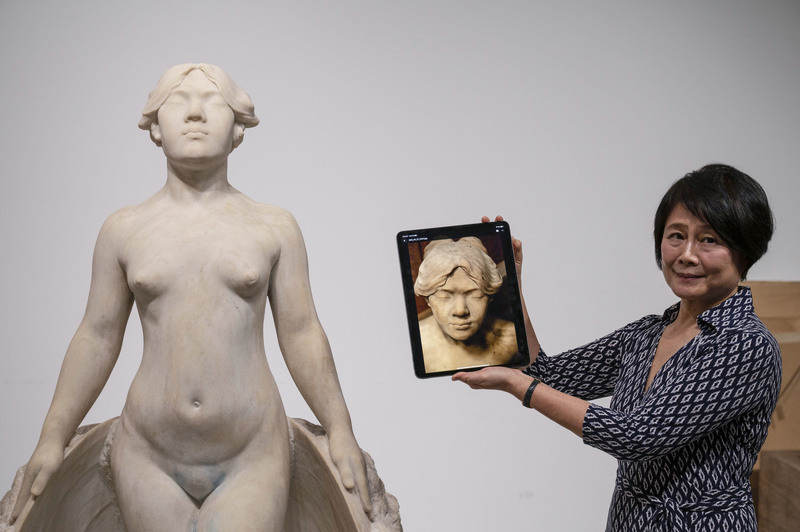
Lin Manli believes that the state must take responsibility for the protection of cultural assets in order to prevent individuals from carrying such heavy burdens. When research, restoration, collection, and exhibition are nearing completion, and the system can give artists’ families a sense of trust, it is possible for the works to live longer. “Preserved works aren’t preserved to get locked up in some vault, but they can be displayed in museums and art galleries, where they can inspire and resonate with modern audiences.”
The art itself is a historical artifact. Art historian Tsai Chia-chiu highlights how older generations of artists risked their lives for their art, and by understanding the era they lived in, the causes they struggled for, we can picture the national future they dreamed of. At this moment, can Huang Tu-shui’s dreams become reality?
“Taiwan is an earthly paradise of divine beauty. The day its people open their eyes, and their youthful spirits run free, there is no doubt that great artists will be produced here. As we look forward to this future, we are working hard to cultivate ourselves in the present. For the sake of furthering our art, we will shout out loudly and courageously, waking the people of our hometown, and calling them to action.”
“I hope the arrival of this golden age of art will no longer be mere fantasy!”
(To read the Chinese version of this article, please click: 刻劃啟蒙的輪廓──黃土水與《甘露水》,百年尺度的遺產與見證 )
深度求真 眾聲同行
獨立的精神,是自由思想的條件。獨立的媒體,才能守護公共領域,讓自由的討論和真相浮現。
在艱困的媒體環境,《報導者》堅持以非營利組織的模式投入公共領域的調查與深度報導。我們透過讀者的贊助支持來營運,不仰賴商業廣告置入,在獨立自主的前提下,穿梭在各項重要公共議題中。
今年是《報導者》成立十週年,請支持我們持續追蹤國內外新聞事件的真相,度過下一個十年的挑戰。

